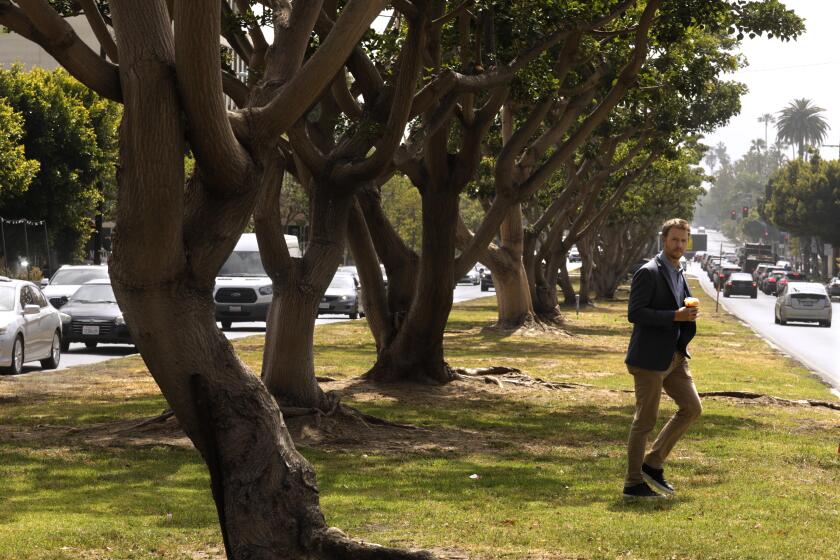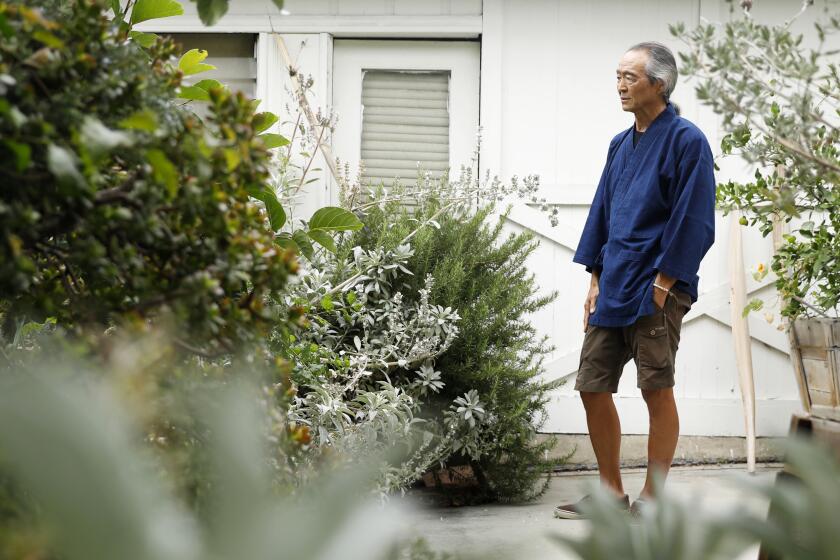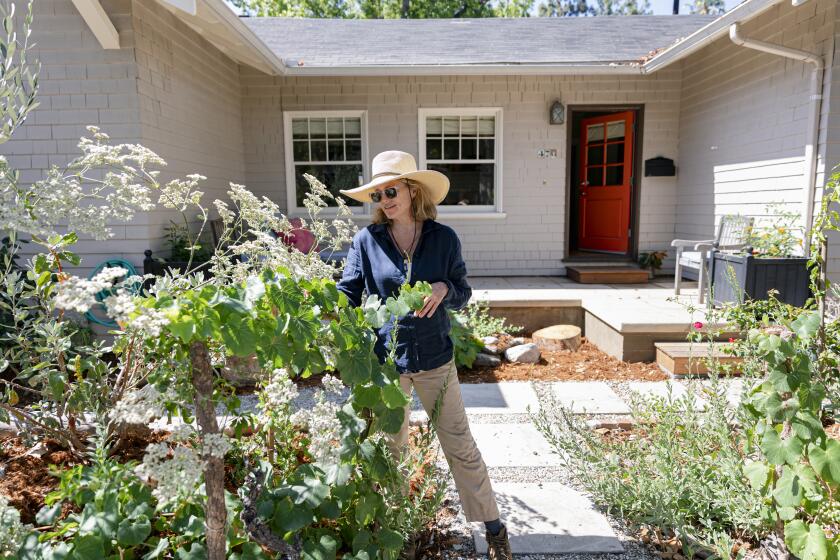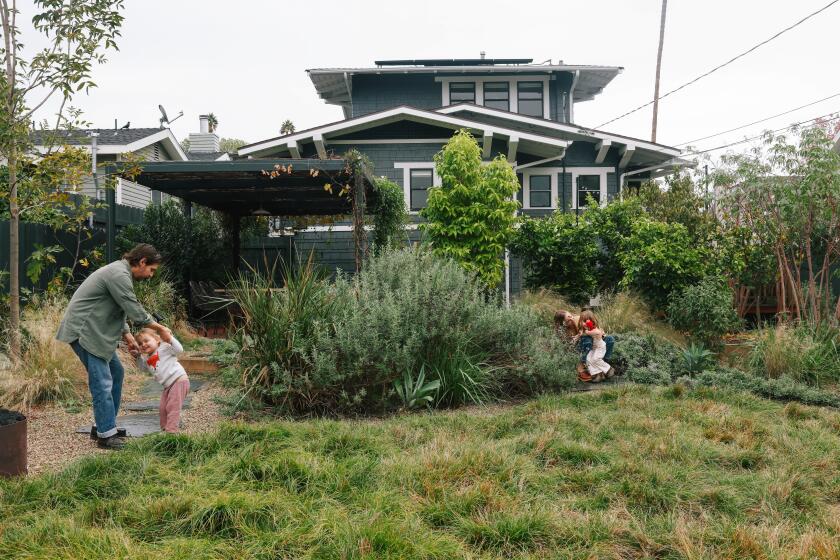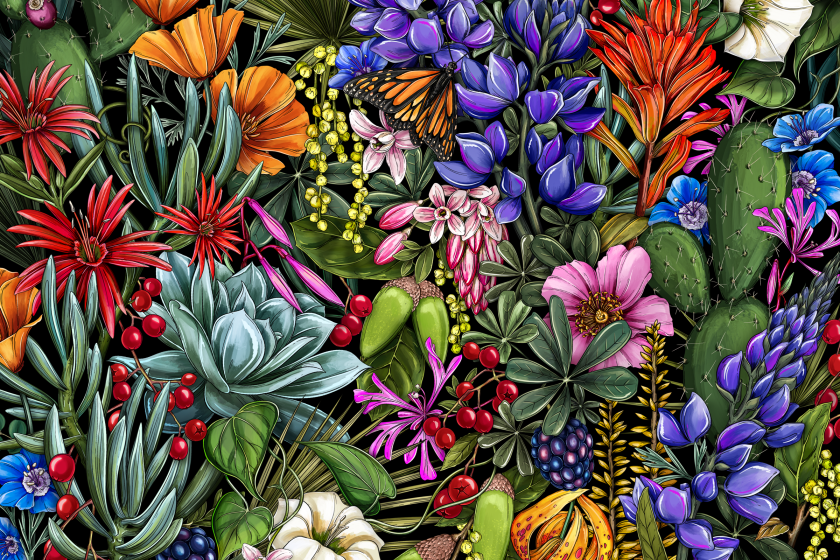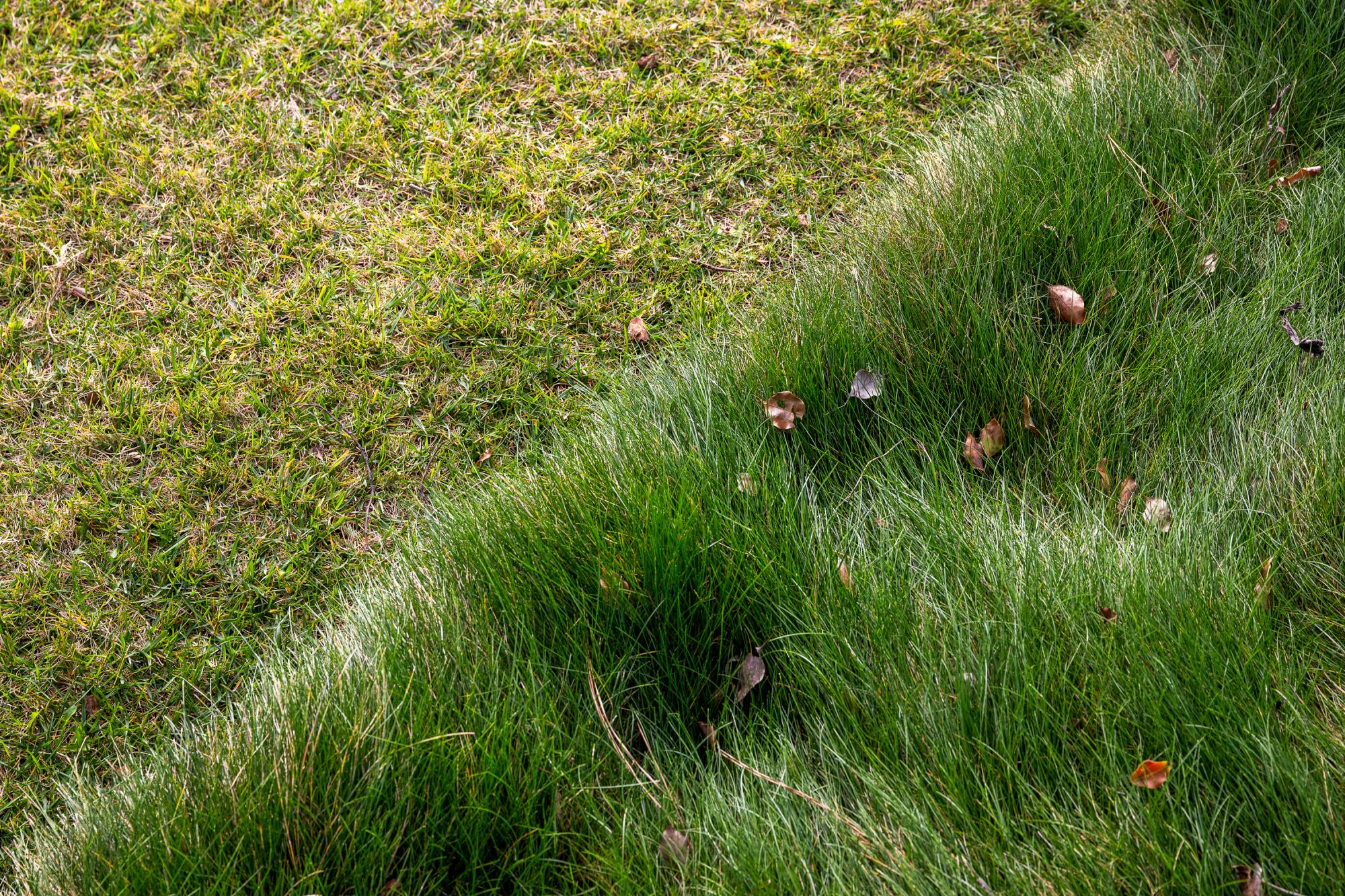
Tearing out your lawn can be a tough decision, especially if you have children or dogs who love to roll and play.
Or — no judgment here — maybe you just enjoy the visual serenity of a swath of green in a region where the hills go brown in the summer.
The good news is there are low-water, lushly green native lawn alternatives to tall fescue, the most popular water-guzzling king of turf grasses. But here’s the truth about these other options: “There isn’t anything out there, native or exotic, that is going to stay green all year round in Southern California without some water,” said horticulturist Carol Bornstein, native plant guru and author of two definitive books about California landscaping, including “Reimagining the California Lawn.”
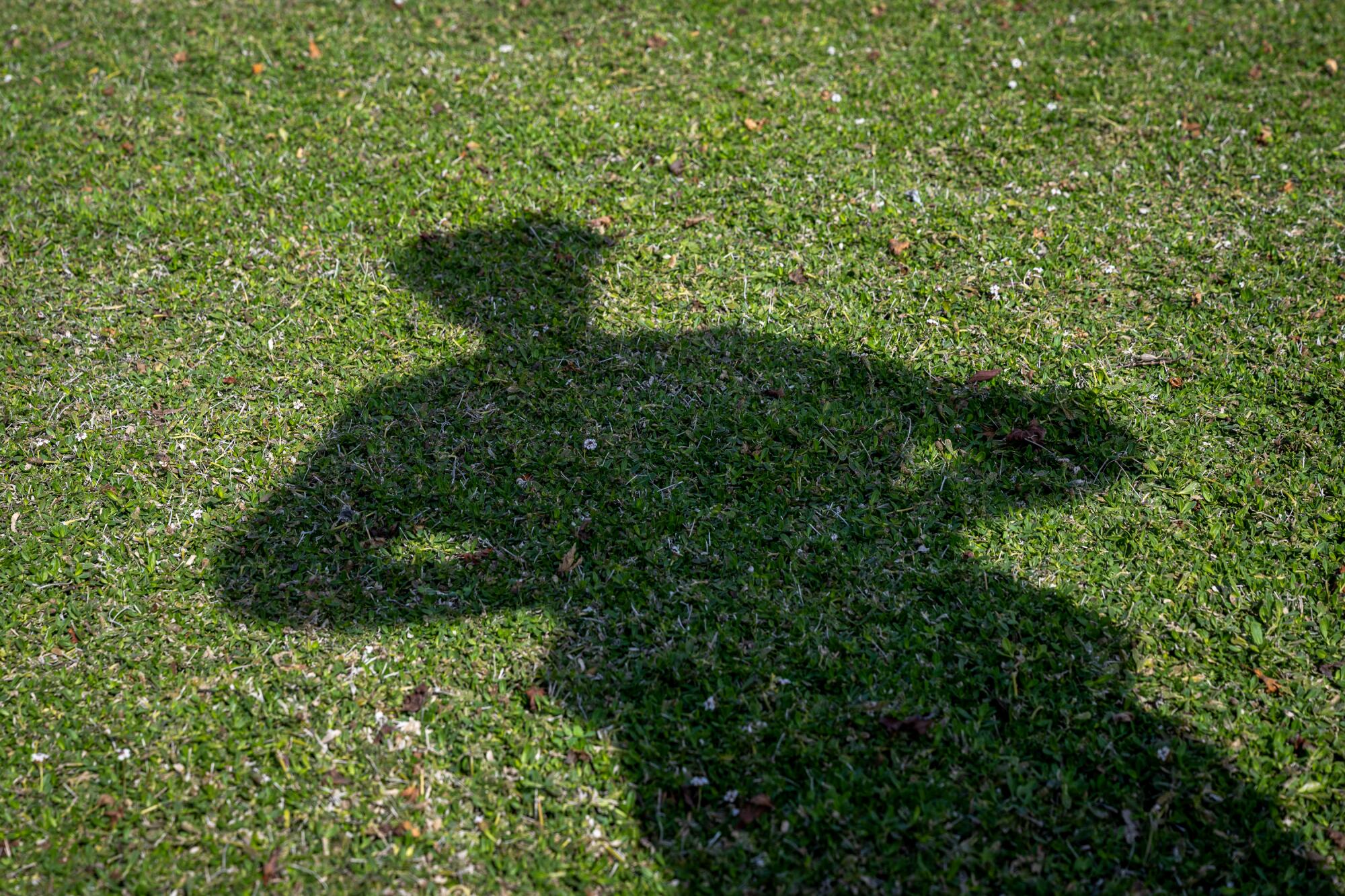
The trick is understanding that less is more when it comes to watering any lawn, native grass or no, she said.
“There is no lawn in Southern California that needs water every day, even in a super hot, dry microclimate,” she said. “You want to wean your lawn off that kind of life support by watering less often and more deeply — basically water when it needs it.”
California legislators passed a water-saving bill banning the use of drinking water on decorative grass outside businesses and along streets.
Unfortunately many lawn owners haven’t gotten this message, said Jim Baird, a turfgrass specialist who oversees UC Riverside’s Turfgrass Research program. Most people are still overwatering their traditional turf lawns with frequent short sessions that encourage shallow, easily dried-out roots. And when they change over to native grass lawns, they don’t change their watering patterns, Baird said, ending up with diseased or dead native lawns due to overwatering.
For the record:
2:53 p.m. Feb. 5, 2024This article has been updated to correct the spelling of Jim Baird’s name.
Native grasses usually require less water than traditional turf lawns because their roots grow much deeper — up to 10 feet deep in some cases — allowing them to find water stored in the ground and weather longer periods of drought.
They’ve also adapted by going dormant during certain parts of the year, like Bermuda, a warm-season grass, which does fine in hot summer months but turns brown during the winter.
For instance, Blue grama (Bouteloua gracilis) is one of the native grasses Bornstein favors for lawns. It does go dormant in the winter, she said, “with a blond coloration, which I think is quite beautiful. But trying to keep it green all year is challenging because too much water will kill them” by rotting the roots.
So that’s another lesson about native grasses: Your expectations will have to change along with your irrigation techniques, because turf lawns and native grass lawns aren’t interchangeable, said Baird.
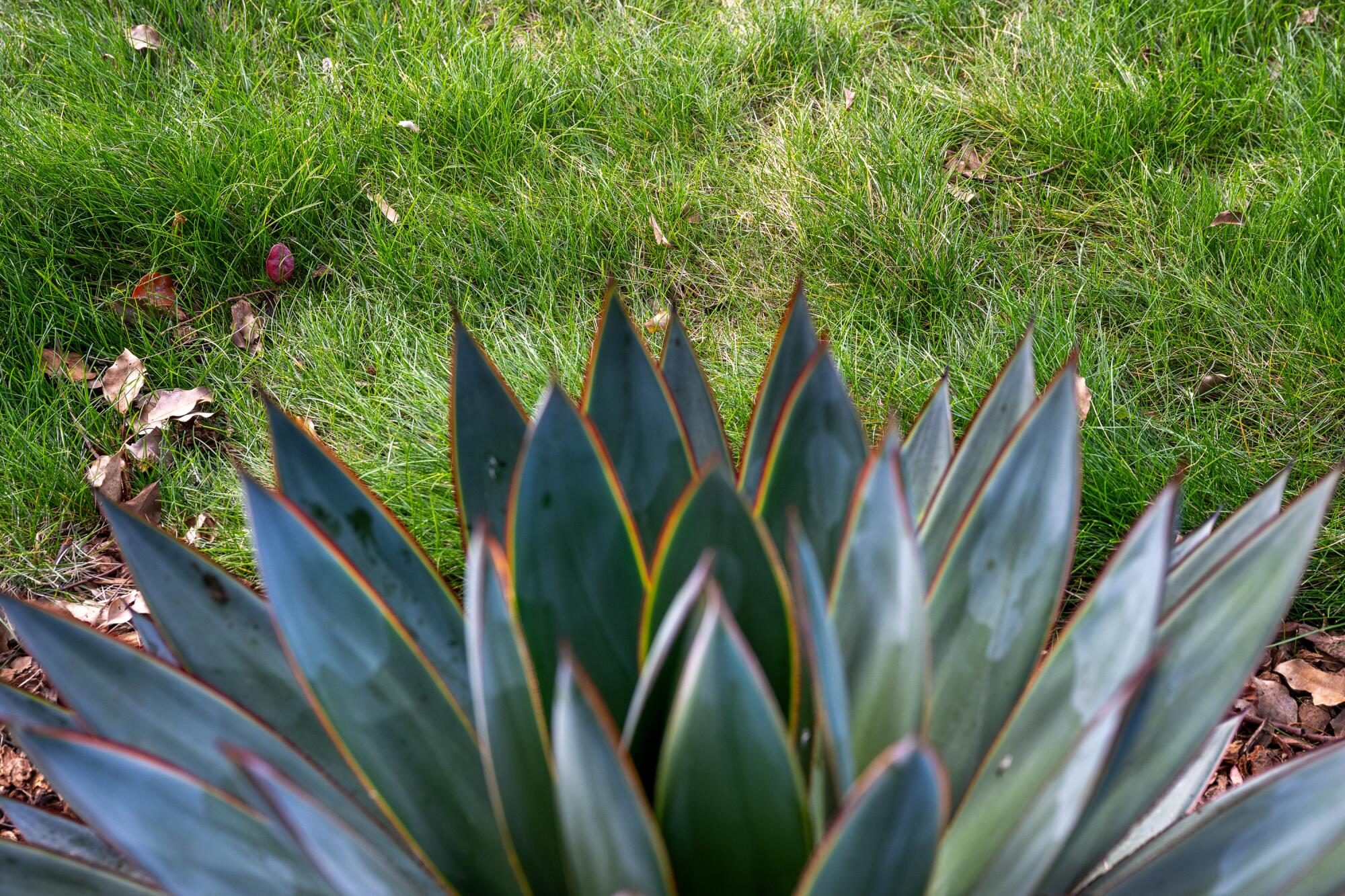

Traditional turf grasses like tall fescue and Bermuda were developed for two purposes — “to withstand persistent low mowing and regular traffic,” Baird said. If that’s what you want, Baird said there is a Bermuda hybrid on the market called TifTuf, developed in Georgia, that has the same low-water needs as native grasses.
But if you’re sick of mowing (or paying someone else to do it), or you just want to reduce water use while creating habitat for local pollinators, birds and other creatures, then native grasses can give you the (mostly) green you crave with a lot less effort and expenses.
These will not be the flat carpet lawns of yore — although Kurapia lawns come close, at least from a distance. Native bent grass (Agrostis pallens) or native fescues like Festuca rubra grow in graceful mounding swirls and tufts that catch the light like glistening swells on a lake. They are beautiful to behold but not so easy to run through.
And unless you plant sod, which is available with some native grasses or grass mixes, it can take a while for the grasses to knit together into what we think of as a lawn.
That’s one of many reasons you should consider reducing the dimensions of your old turf lawn when you decide to plant a new lawn with native grasses. Create planting beds in part of the old lawn area to grow food for your family and/or support pollinators, birds and other local wildlife by planting native trees, shrubs and flowers.
Georg Kochi moved to his family home and tore out the lawn. As he learned about native plants, he fell in love with drought-tolerant landscaping.
Good drainage is critical to maintaining the health of native lawns, said Briana Lyon of California Wild Gardens in Pasadena, an online-only nursery whose products include native grass lawns. Some native wetland grasses like California Meadow Barley (Hordeum brachyantherum ssp. californicum) can live for a short time in standing water, but these are best used to line bioswales where you want to clean rainwater running off from roofs or streets.
Most native grasses prefer dry conditions and full sun. Some, like the fescues, can do well in shade, but Lyon recommends prepping the soil by tilling the topsoil 4 to 6 inches deep and adding a mixture of compost and a drainage medium like decomposed granite or sand to encourage good drainage, especially if the ground previously had standing water during heavy rains.
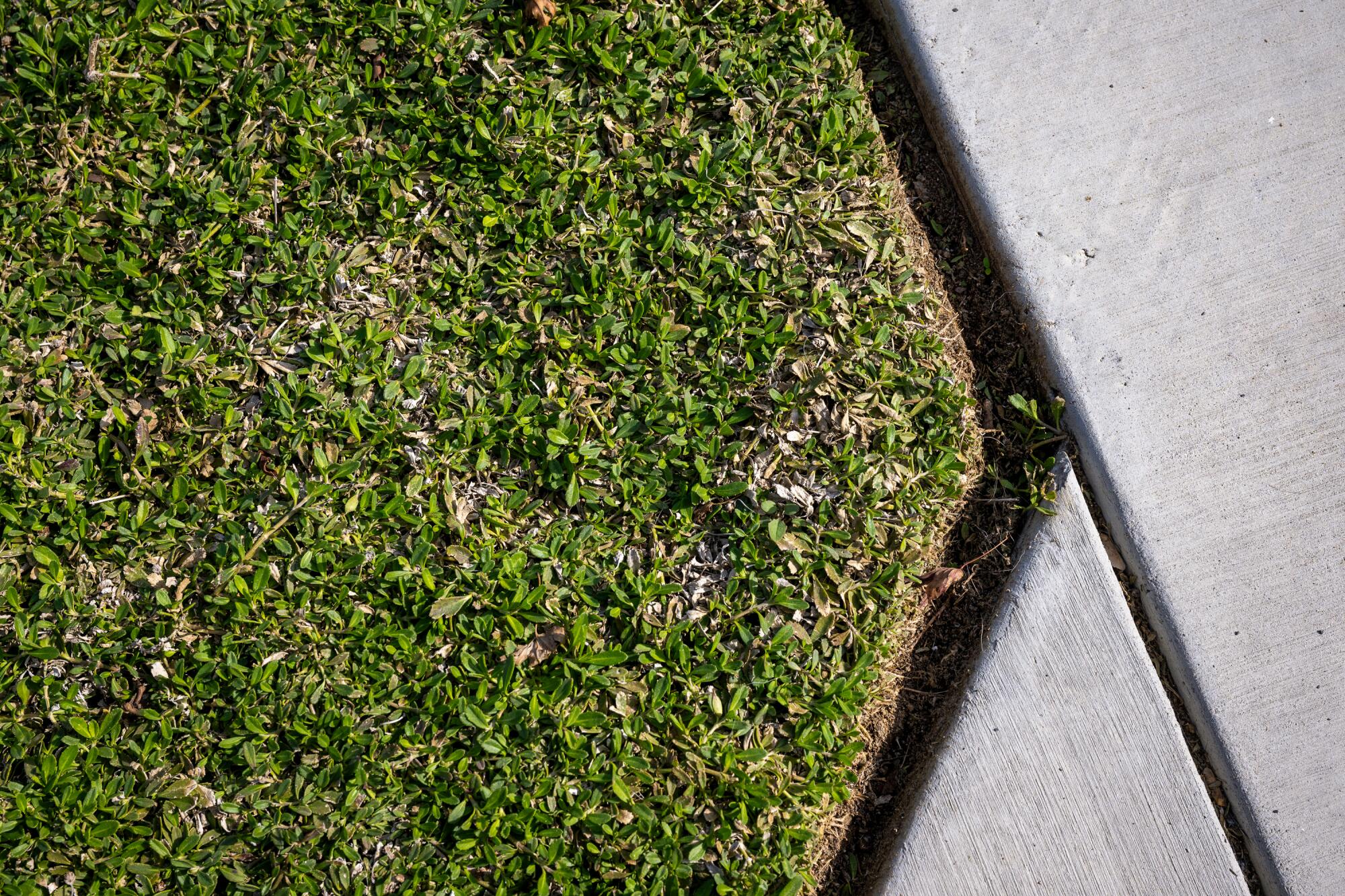
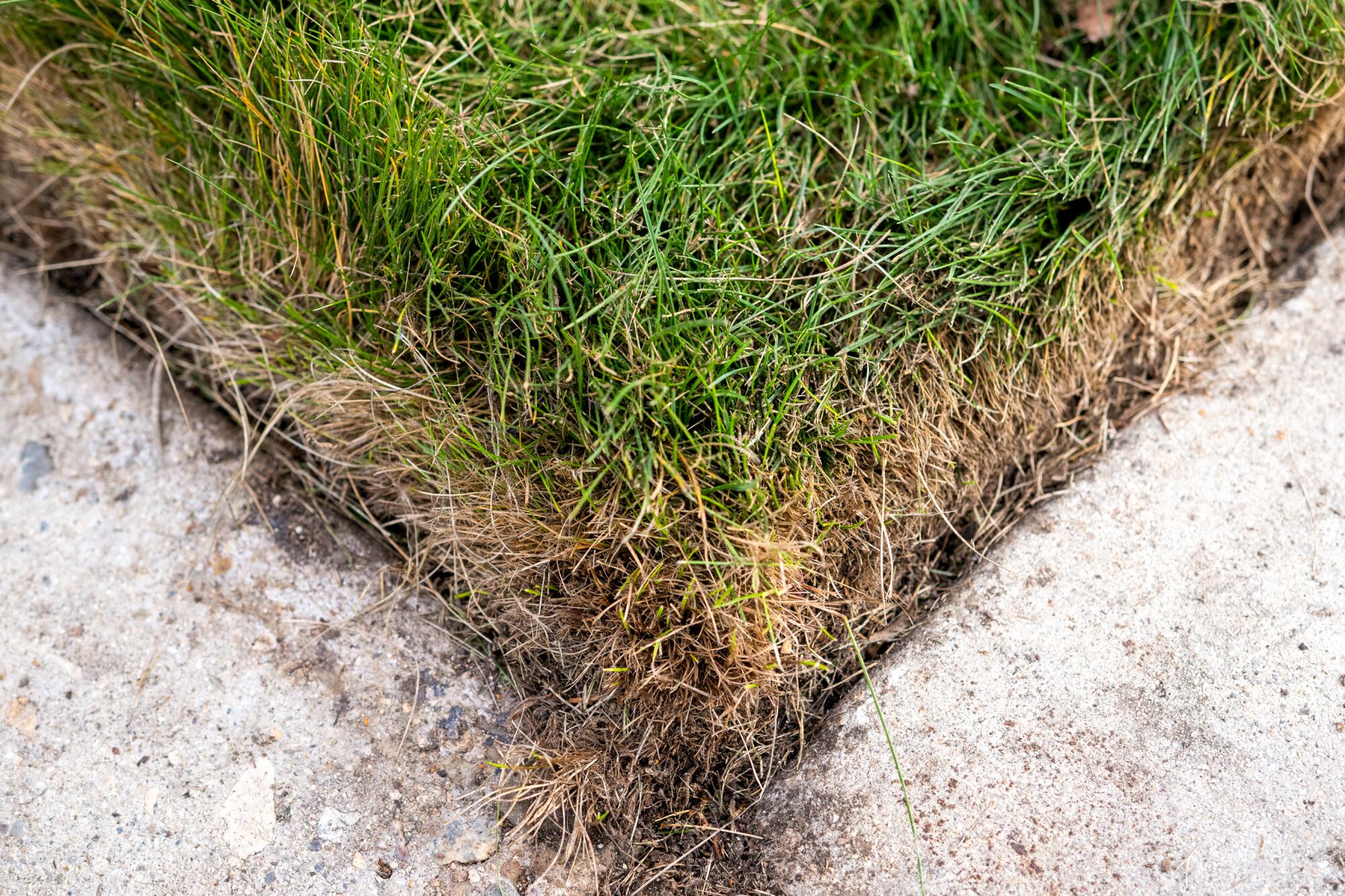
You don’t want to add too many amendments like compost or worm castings, however. “You don’t want to discourage the roots from doing a deep exploration by staying with the yummy stuff on top,” she said.
Weeds are also a problem, especially when the native grasses are trying to get established. Kurapia and some of the grasses can eventually grow dense enough to crowd out most weeds, as long as the weeds don’t get a foothold and crowd out the natives first, so expect to do some regular weed patrols the first year to keep unwanted plants away.
Finally, understand that the type of native grass you choose really depends on how you plan to use the space. If you want a relatively flat, easy-care space where pets and children can frolic, then Kurapia may be your best choice. But if your biggest interest is creating an ornamental lawn that’s a feast for the eyes, then look to the sculptural, undulating bent grasses or fescues.
Here’s a list of some of the more popular native grasses to consider, with this note too: Some of these grasses are native to other parts of North America, or even other countries, in addition to California, so if in doubt, check the botanical names, consult with guides like Bornstein’s books or talk to native plant experts at the Theodore Payne Foundation, Tree of Life Nursery, the California Botanic Garden in Claremont or the Santa Barbara Botanic Garden.
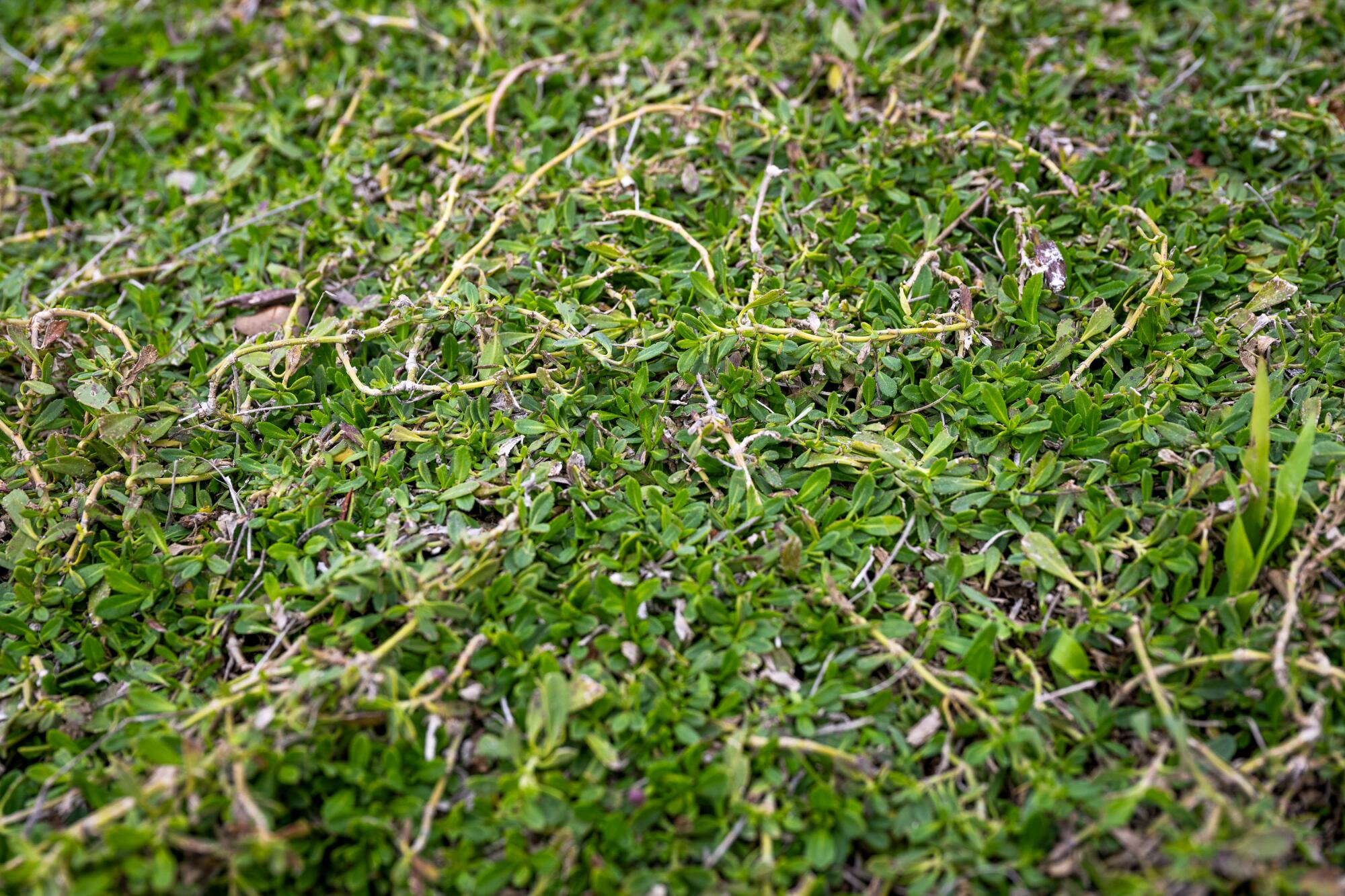
1. Kurapia
People use lots of exclamation points when they talk about Kurapia, which, for the record, isn’t a grass at all. It’s a sterile patented hybrid of a native broadleaf groundcover from the verbena family commonly known as frog fruit or lippia (Phyla nodiflora), named after the Japanese hybridizer, Utsunomiya University professor Hitoshi Kuramochi, and the origin plant, lippia. Robert Sjoquist of Soils Solutions in Ventura can’t sing its praises highly enough. Sjoquist is a distributor who sells native grasses all over Southern California, but Kurapia is one of his favorites, he said, because it spreads like a carpet with pretty clover-like flowers, requires almost no water or maintenance to stay beautifully green, quickly stabilizes hillsides and slopes and helps prevent wildfire damage by snuffing out embers as they fall.
It also spreads quickly and is relatively easy to propagate, which is why the breeder, Kurapia Inc., carefully guards its latest strains, Kurapia New White and Kurapia Pink (named for the color of its flowers). These new strains can be purchased only online, through the company, said senior manager Lawrence Ziese. They’re only available in plug form now, although the company hopes to have a sod version available soon. A flat of 72 plugs, which covers roughly 97 square feet, costs $173 for the “new white” color and $187 for the pink.
Ziese said the new versions grow more densely than the company’s first offering, known as Kurapia S1, which is grown in 2-by-5-foot sod sections by Delta Bluegrass in Stockton and delivered by truck. (West Coast Turf of Palm Desert also sells Kurapia S1 sod but is currently out of stock.) Sod is more expensive — about $315 to $340 to cover roughly 100 square feet — but you also get an established lawn in less than half the time, said Sjoquist.
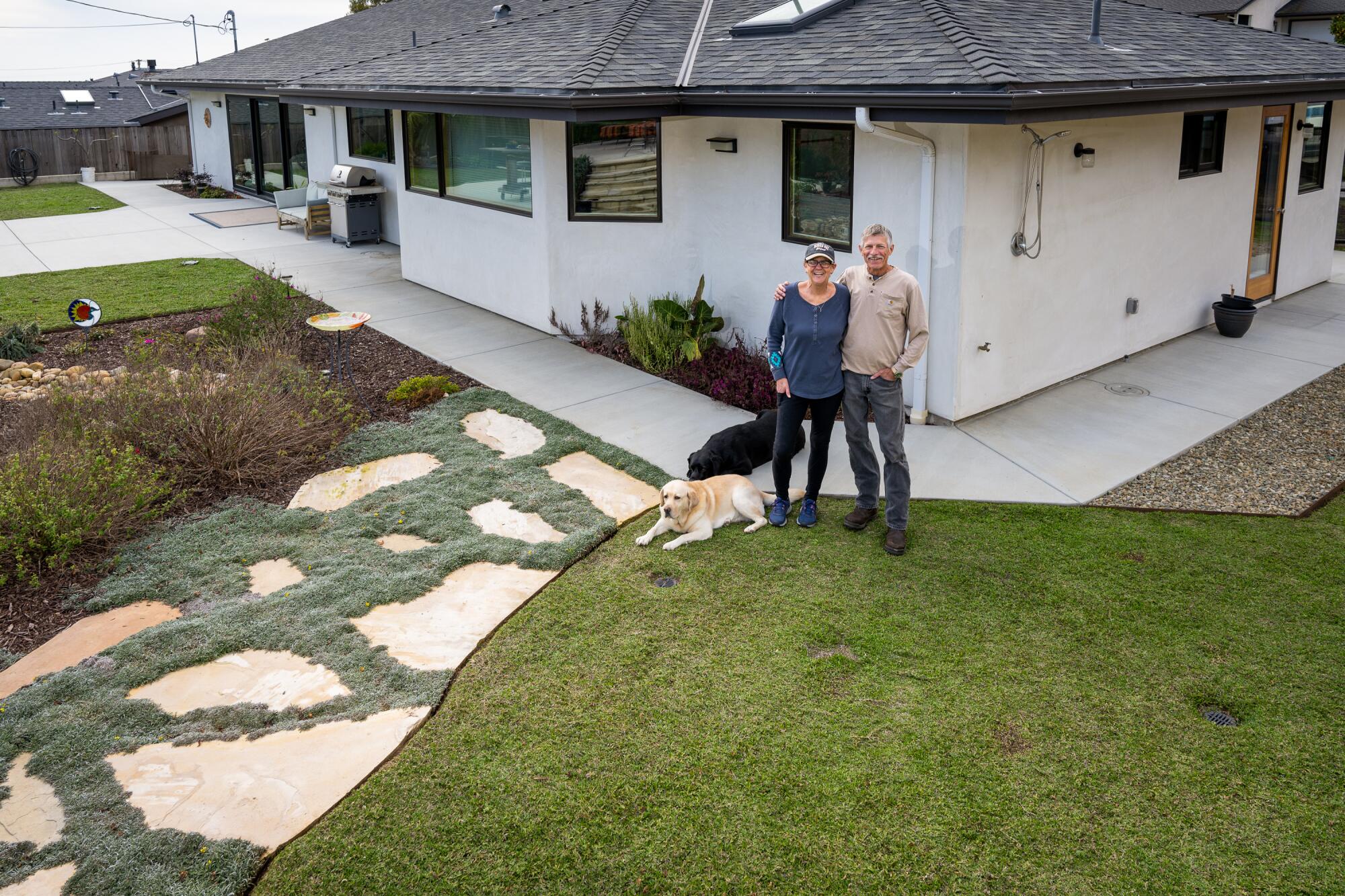
“It looks so good it almost looks like fake grass because of how uniform and low-growing it is,” said Lyon. It thrives in poor soils, even sand and salty soils, as long as it has good drainage, she said. It’s important to keep it weeded in the beginning, until it becomes established.
Christie and Ray Mahr of Ventura say they and their dogs love the 3-year-old Kurapia lawn in their backyard. They planted the lawn themselves from plugs — a job that took just a couple of hours, Christie said — and it took some maintenance in the first few months to keep weeds from resprouting. But she and Ray say that’s nothing compared to the work that went into mowing and watering the Marathon turf lawn they had before. Now they rarely water the lawn. It seems to get enough water from the drip lines for trees and other plants.
At first, this DIY lawn removal in Pasadena confused neighbors. But now the hugel-filled drought-tolerant yard gets showered with compliments.
They use hand clippers to keep tendrils from growing beyond the lawn boundaries and Ray mows just once or twice a year to remove the flowers that come in the spring to early summer. “They most definitely brings bees to your garden,” Christie said. “I won’t even come out here and walk unless I’ve got tennis shoes on because otherwise you know you’re going to step on a bee or a butterfly.”
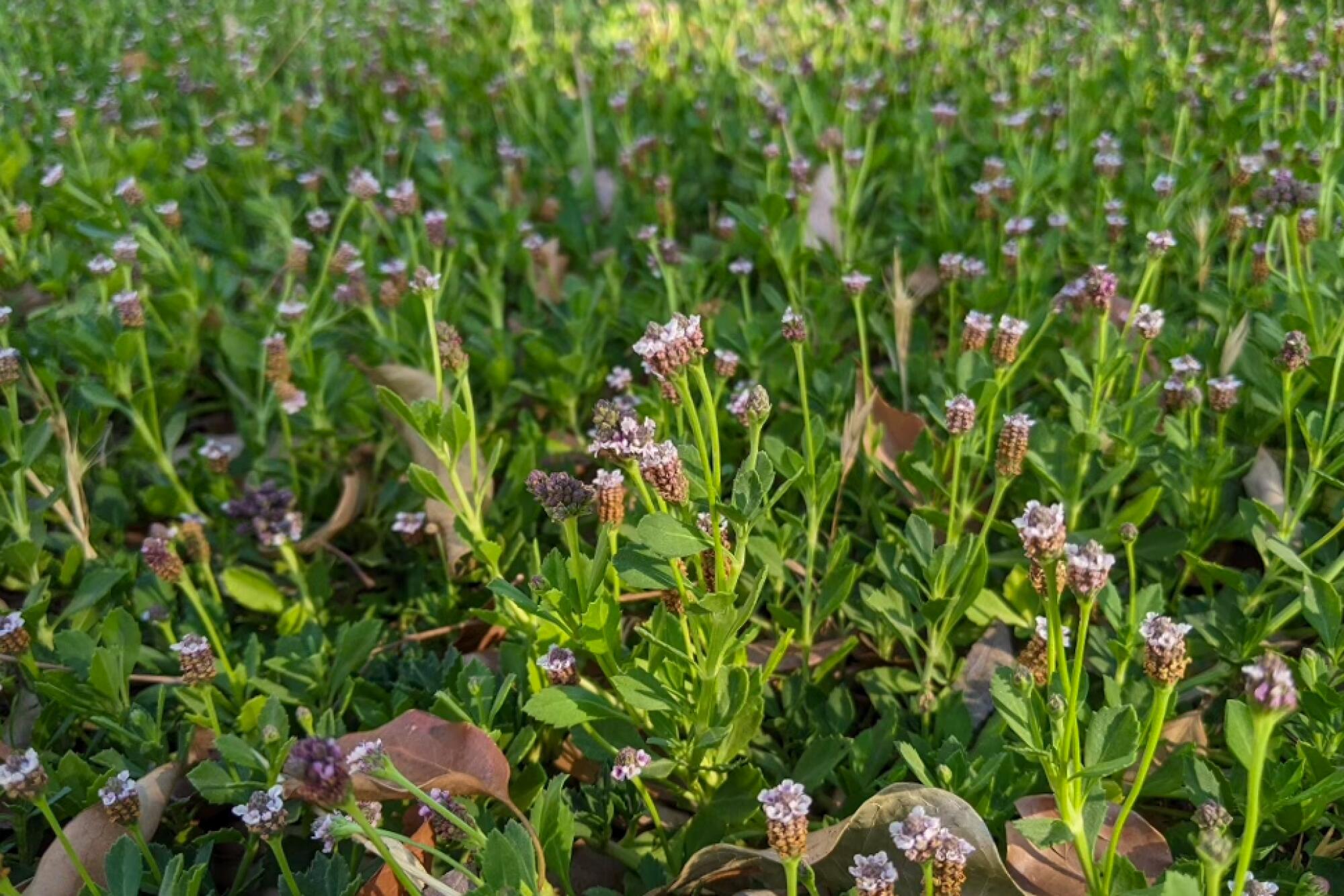
2. Frog fruit, a.k.a. lippia (Phyla nodiflora)
The parent of Kurapia is endemic to California and many other parts of the world, including Texas and the southeastern coast of the United States. Like Kurapia, it needs very little water and thrives in heat. Southern California landscape designers looked into lippia as a lawn replacement in the 1970s, Lyon said, but quickly abandoned the idea “because it seeded so aggressively,” spreading into neighboring yards or planting areas where it wasn’t wanted.
But Brian Chau of Redlands said he hasn’t really seen that problem in his front yard. Chau usually blogs about fishing, but he created a YouTube video to show off his lush lippia lawn, which he planted in 2021. He first tore out his traditional lawn and planted yarrow, which didn’t do very well, so he tilled the yard again, removing the yarrow (which still sprouts up now and again) and planted lippia. Chau said he chose lippia rather than Kurapia because it was a “fraction of the cost” to purchase — $15 for a flat of roughly 50 plugs at the time, versus around $60 for Kurapia, he said.
He buried a drip irrigation system in his yard, but he doesn’t use it at all during the cooler months, and turns it on for just a few minutes two or three times a week during the hottest part of summer to keep his lawn watered. “It’s just a burst of water during those times, but now I’m trying to do it just once a week for a longer period, just to experiment.”
The lawn grows more leggy and less vigorously in shady parts of his yard, and like Kurapia, its flowers are a huge draw for bees and other pollinators, Chau said. “So if you’re allergic or terrified of bees, this lawn isn’t for you, but if you don’t mind bees, the lippia is great for attracting pollinators to our fruit trees and native plants.”
Kyle and Claire Penn pulled out their lawn in Eagle Rock and never looked back. “We haven’t given up anything by not being able to run around on grass,” Kyle says.
Chau said his son plays on the lawn regularly. “He runs around and beats the lawn down, but it doesn’t complain too much,” he said. “It always bounces back, but it would be detrimental to have an animal rooting around in it.” He uses hand clippers to trim back the plants trying to grow outside the lawn borders, and replants those cuttings to fill in areas that are looking thin. The cuttings “root very easily in water or moist soil,” he said, “so I don’t have to buy flats anymore.”
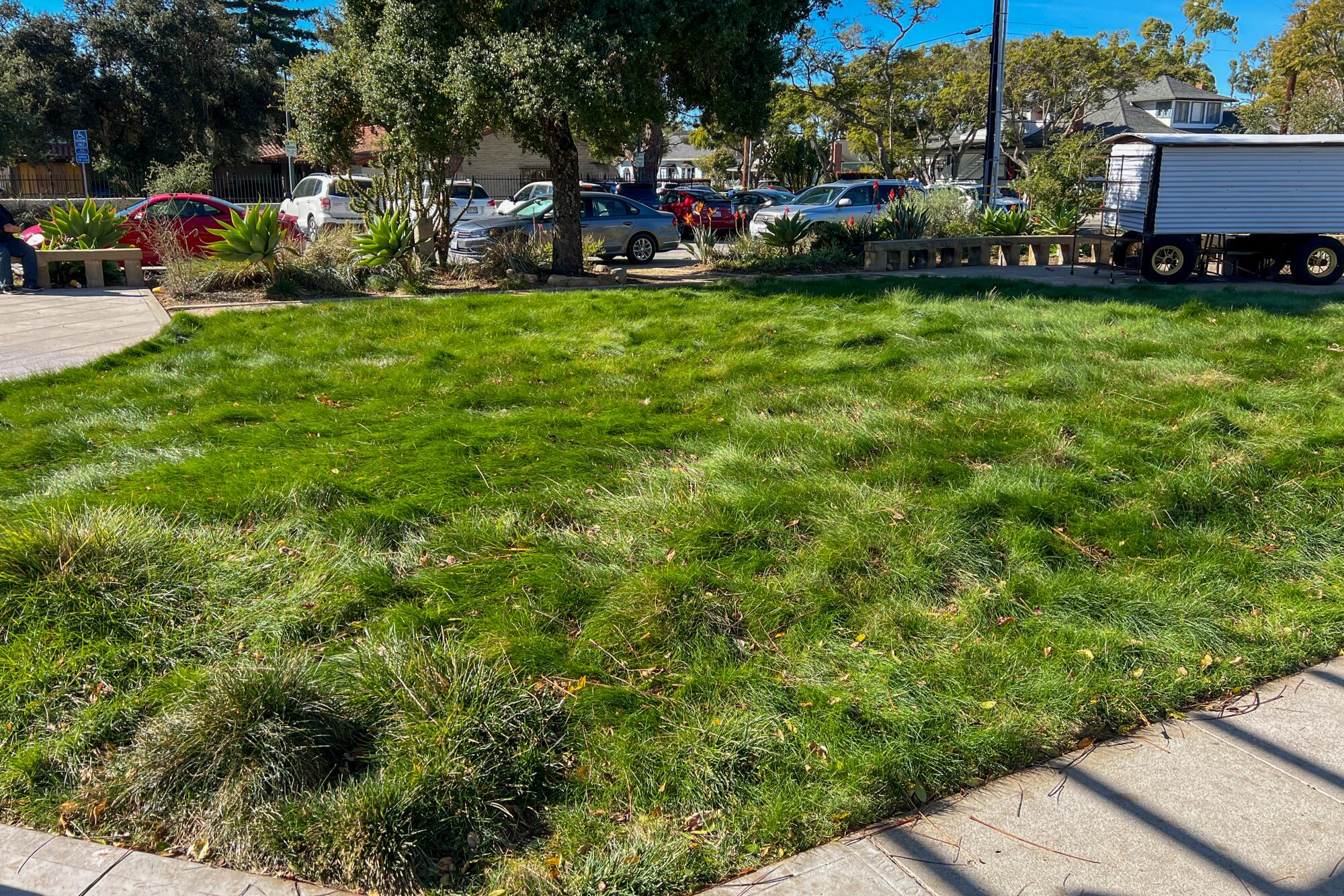
3. Native bent grass (Agrostis pallens)
If you love the look of a wild meadow-like lawn, native bent grass is a beautiful and fairly durable choice. Lyon said bent grass makes one of the most pet- and kid-friendly native grass lawns.
The city of Carpenteria planted a bent grass lawn from seed when it created Seaside Park near the library in 2014, and it’s been a handsome, easy-care choice that requires little water, said Tiffany Smith, the city’s parks and facilities maintenance supervisor.
“We mow it probably every three months at the most, so three or four times a year, and the water savings are huge. We water with regular lawn sprinklers once a week in the summer for 20 minutes or so, just enough to get the water down 2 inches,” she said. “And we’ve had almost no weeds. Every once in a while a broadleaf weed comes up and we just pull it. ... We love it.”
She said they mow the lawn down to about 3 inches tall, but it grows back quickly into luxuriant waves.
Carpenteria rarely sees summer temperatures much higher than 90, but in the hottest months the lawn never seems stressed — even after people have been sitting on it. It only gets light foot traffic, Smith said, but the city is so pleased with its performance after 10 years that it’s considering whether to remove the turf lawn around the library and replant with bent grass to create a uniform look.
“I bet we could easily cut our water use by two-thirds,” she said.
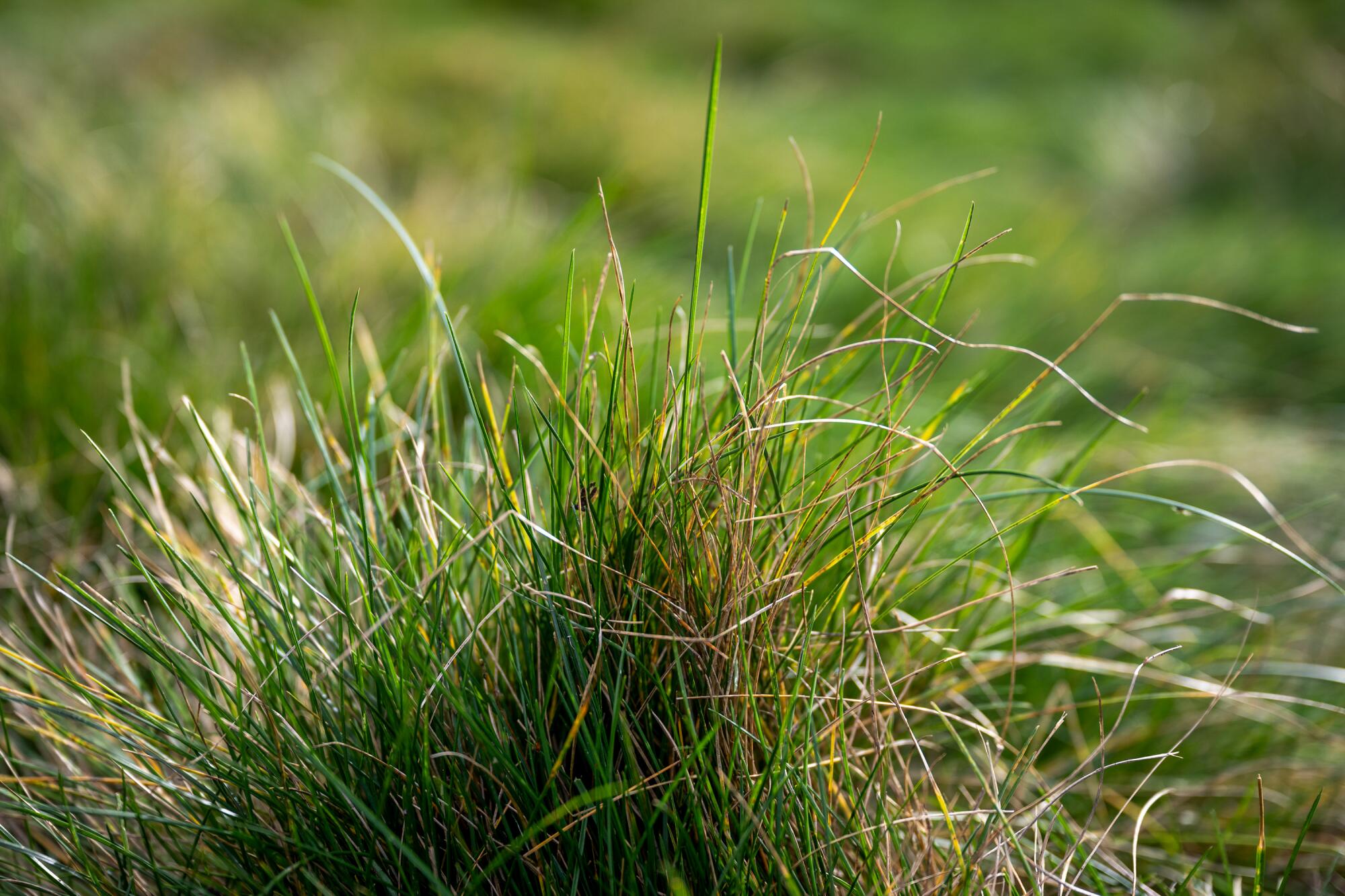
4. Native fescues (Festuca)
If you want a lush, light-catching lawn to gaze upon, native fescues are one of your best bets, especially in a shady area, said Lyon.
Delta Bluegrass makes a mow-free sod mix of three native fescues — Idaho fescue (Festuca idahoensis), Molate fescue (Festuca rubra) and Western Mokelumne fescue (Festuca occidentalis) — that requires very little care, said John Ellis, who replaced the 1,000-square-foot turf lawn outside his Westlake Village home with mow-free fescues in December 2022.
His children are grown and no pets play on the lawn out front, so it doesn’t get much traffic, Ellis said, “but I will tell you that every kid or dog that comes by rolls around the grass. They touch it and they’re walking in it.”
Too much traffic isn’t great for the fescues, however, said Lyon. The fescues are probably the least drought-tolerant of the native grasses, and incompatible with pets. “It kills patches of the lawn if a dog pees on it,” he said.
Here are the best retail native plant nurseries in Southern California to help you create a habitat for birds and pollinators in your yard or even on a patio.
But if you’re looking for sculptural beauty, this is the lawn for you. Ellis figures his irrigation costs have dropped by 60%, even in his area near Thousand Oaks where temperatures can easily hover around 100 degrees during the summer. He bought the sod through Soils Solutions and hired Robert Olsen of Goldenstate Landscapes in Camarillo to remove the old lawn and install a copper-lined drip irrigation system on a smart system that adjusts watering based on moisture in the ground. All told, he figures he spent $9,000 on the project, and is delighted with the results.
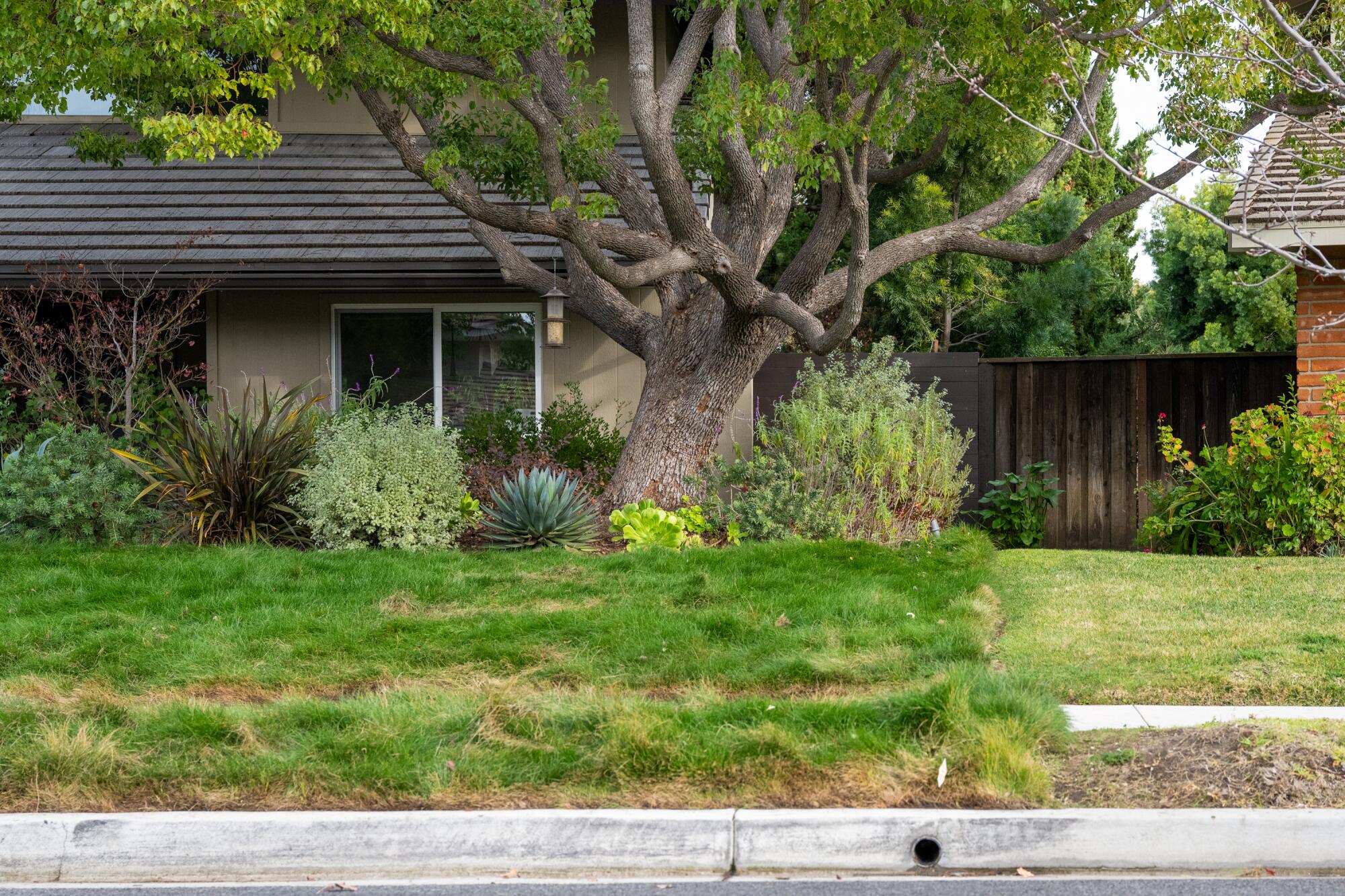
His biggest comment from neighbors is wondering if he plans to mow his lawn, Ellis said, but he likes the look of the grass flopping over. His work included installing a 12-inch barrier between his yard and his neighbor’s to ensure his grasses didn’t mingle with theirs, but the difference in color is startling. His neighbors’ lawns are both green and thick, but they look pale in comparison to his deep green growth.
Ellis said he’s had some issues with tendrils of his old Bermuda grass trying to grow through. But most weeds have been smothered, and he’s been able to pull out any Bermuda grasses he finds. “You have to stay on top of it,” he said, “but so far this has been the best choice for us.”
More to Read
Sign up for The Wild
We’ll help you find the best places to hike, bike and run, as well as the perfect silent spots for meditation and yoga.
You may occasionally receive promotional content from the Los Angeles Times.
